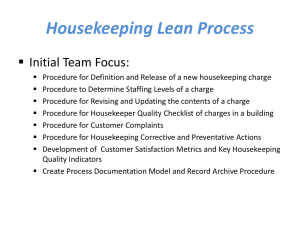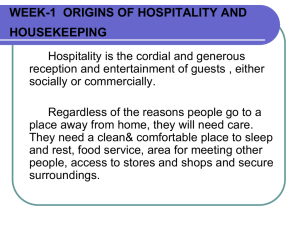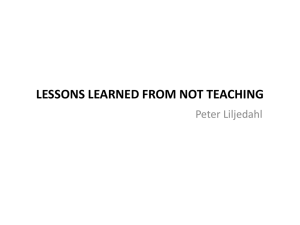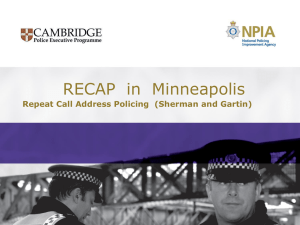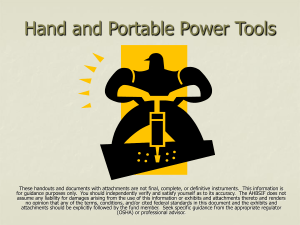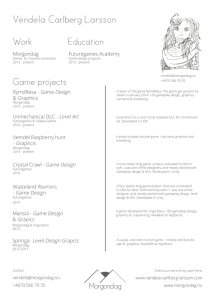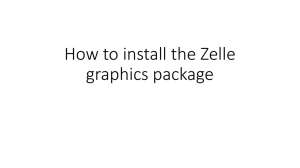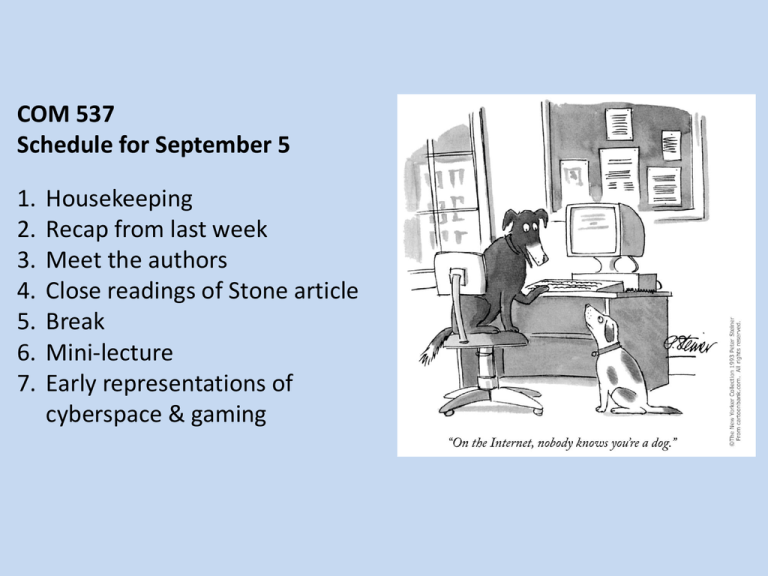
COM 537
Schedule for September 5
1.
2.
3.
4.
5.
6.
7.
Housekeeping
Recap from last week
Meet the authors
Close readings of Stone article
Break
Mini-lecture
Early representations of
cyberspace & gaming
1.
Housekeeping
Staying safe
Since this course ends at 8:45, we are ineligible for NCSU’s Safety Escort Service
(10 pm to 4 am).
Please consider walking to (your car, the bus stop, etc.) with a buddy/colleague
from class.
1.
Housekeeping
For September 12 (and for the rest of the course)
Send me your notes for each weekly task by Tuesday evening.
1.
Housekeeping
September 19
In TWO WEEKS you’ll be bringing your Final Project Proposals to class.
5% of your final mark for the review workshop we’ll be doing.
Consider doing a conference panel presentation with instructor & other
colleagues for the Pop Culture Association / American Culture
Association conference, March 30, 2013, in Washington DC
1.
Housekeeping
September 26
In THREE WEEKS we’ll have time in class to do the Portfolio Assignment
“Under the microscope”.
Those of you who want to do this assignment will be conducting mini
audiovisual ethnographies on those who aren’t doing this assignment.
So think of the games & systems you want to use & start “recruiting
participants”.
1.
Housekeeping
SEND ME DRAFTS of portfolio work!
You should be getting your portfolio assignments underway already.
For those doing “Public Displays of Gaming”, consider doing a series of
observations of the gaming area in the Hill Library Learning Commons.
2. Recap from last week
Actor-Network Theory
•
ANT gives us a conceptual framework
for examining the co-constitutive
relationships between humans, tools,
symbols, laws/policies, contexts, etc.
that characterize gameplay
•
Agnostic in terms of scale (e.g.
nothing is macro/micro – just a series
of relationships connecting us over
time and place) and in terms of
ontology (e.g. we are as much ‘acted
on’ as we are ‘actors’ in a given
context)
2. Recap from last week
Assemblage
• Comes from French social theory / philosophy (Deleuze)
• As a unit of analysis - used to describe the contingent &
dynamic relationships between ‘things that act on each other’
• Difficult to delimit & define in practice (i.e. in empirical
studies of gameplayers)
2. Recap from last week
Post-humanism
• Humans no longer regarded as exempt from, or above, nonhuman processes and systems
• Individuals no longer regarded unitary & static entities
2. Recap from last week
Cybernetic circuits
• A way of looking at video gameplay in particular as a set of
actions circulating between player(s), the game hardware, and
the game itself
3. This week’s authors
A virtual book-signing in Second Life
Julian Dibbell
Journalist writing on Internet communities
-- Play Money (2006)
3. This week’s authors
Richard Bartle
Co-creator of “MUD1”, the first Multi-User Dungeon
3. This week’s authors
Alluquere Roseanne “Sandy” Stone
“The ”Empire" Strikes Back: A Posttransexual Manifesto” and “The CrossDressing Psychiatrist”
4. Close reading of “Will the real body please stand up?”
Section 1:
Philip and Eric
From “The Machines are Restless Tonight” to “A Virtual
Systems Origin Myth”
Section 2:
Hannah, Tatyana and Nathan
Epochs 1-4
Section 3:
Myron and Cristiane
Decoupling the body and the subject
4. Close reading of “Will the real body please stand up?”
Working on your specific section, provide the following:
-
250 word summary of section
Key quote
Problematic words/phrases (and their definitions)
Ask a question of the section
6. Contextualizing the Real/Virtual Split in
Videogame Studies
Cyberspace in the 1980’s & 90’s:
The New Digital Frontier?
Sherry Turkle’s (1995) “Life on the screen”: we can “reinvent”
ourselves online
“The physical world… is a place where identity and position of
the people you communicate with are well known, fixed, and
highly visual. In cyberspace, everybody is in the dark” (Kitchin,
1998)
Enthusiasts saw “cyberspace” as a place of possibilities where
“RL” inequities (based on race, class, sex, ability) were erased
Anxieties – and transgressions – around identities &
interactions in arenas where “real life” bodies are invisible
(and selves are represented through text/graphics)
• The “cross-dressing psychiatrist”: male psychiatrist posing
online as a female quadriplegic
• Blogger behind “A gay girl in Damascus” actually a 40-year old
white college student from Georgia
Multi-user dungeons:
Predecessors to online role-playing games
The architecture of MUDs
A ‘virtual world’ communicated &
represented entirely through words
on the screen
The world is made up of a bunch of
rooms/areas (or descriptions of
rooms/areas) through which players
travel by typing in commands:
- “Attack dragon.”
- “Go through western door.”’
http://www.edge-online.com/features/making-mud
Massively Multiplayer Online Role-Playing Games (MMORPGs, or just MMO or MMOG)
Guild Wars 2
A (superficial) look at various role-playing media
Materials
Scale
Relationship to
other players
Relationship to
creators / game
masters
Live-action roleplaying (LARP)
Costumes, props,
maps
2 to 100’s
Mostly personal
networks
Personal networks
Tabletop gaming
Rulebooks, dice,
pen & paper
2 to 10
Mostly personal
networks
Personal networks
Multi-user
Dungeon (MUD)
Computer &
internet
connection,
software
2 to 100’s
Some personal
networks, some
strangers
Personal &
professional
networks
Massively
multiplayer online
games (MMOGs)
Relatively powerful
PC, high-speed
internet
connection,
software client,
monthly
subscription
(sometimes)
1000’s to millions
Some personal
networks, mostly
strangers
Commercial;
consumer buys
service, game
companies run it
Check out http://www.raphkoster.com/2011/11/30/3-part-video-history-of-mmos/
Richard Bartle in an interview with EDGE magazine (2009):
“Text is more expressive than graphics. It’s also more descriptive – there are no smells in
EverQuest.”
“With text, I can talk to the mind. With graphics, I can only talk to the senses. I can get
more depth out of text than I ever could out of graphics. I think text can be more
evocative overall than graphics, but that doesn’t mean I don’t think graphics can’t be
evocative, or that in some areas their evocativeness can’t exceed that of text.”
Virtual representation:
Creation vs selection
MUDs:
“legba, a Haitian
trickster spirit of
indeterminate gender,
brown-skinned and
wearing an expensive
pearl gray suit, top hat,
and dark glasses”
(Dibbell)
MMOs:
F or M
Skin colour
Race
Class
Cosmetic appearance
Guild Wars 2
Current research on MMOGs:
The notion that virtual environments are somehow ‘separate’
from everyday life still persists
Quantitative research focuses on what avatar appearance and interactions reveal
about the player
• Avatar / player relationship is assumed to be 1 : 1 – what THE avatar says
about THE player
• Context – either the design of the game or the material conditions of players’
lives – is often disregarded
Qualitative research focuses on how MMOG play fits into players’ everyday lives, how
players negotiate, appropriate and mess around with game rules and narratives, and
how their identities and relationships are transformed through online play
7. Early representations of gaming and/or cyberspace
Lawnmower Man (1992)
http://www.youtube.com/watch?v=YCxFGxqLsHE
http://www.youtube.com/watch?v=kd81KPuENyI&feature=related



